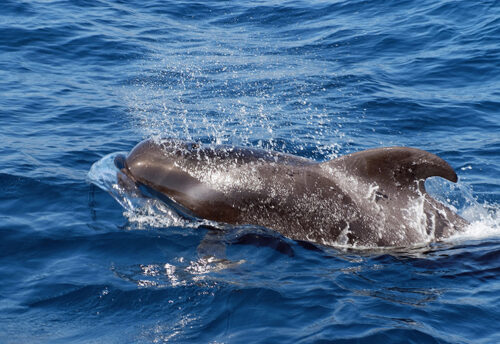
The Asiatic cheetah was once spread from the Arabian Peninsula and the Near East to the Caspian region, Transcaucasus, Kyzylkum Desert and northern South Asia. However, they have been extirpated from everywhere but a small portion of the Iranian central desert. These cheetahs face the threats of habitat loss and destruction at the hands of residential and commercial developments, farming, and ranching; hunting; trapping; a declining prey base; and the potential for inbreeding, due to a low genetic diversity. The IUCN lists these beautiful cats as Critically Endangered. Their population trend is listed as decreasing.
First the Stats…
Scientific name: Acinonyx jubatus venaticus
Weight: Up to 119 lbs.
Length: Up to 53 inches, plus up to a 33 inch tail
Height: Up to 32 inches, at the shouders
Lifespan: Up to 20 years
Now on to the Facts!
1.) Asiatic cheetahs diverged from African cheetahs approximately 72,000 years ago.
2.) They were first described by British naturalist Edward Griffith in 1821.
3.) Another name for these big cats is the Trans-Caspian cheetah.
4.) Cheetahs are the fastest land animal on earth, reaching speeds of up to 75 mph! However, they can only maintain this speed for up to 30+ seconds before they tire from exhaustion.
5.) The cheetah’s nervousness post-hunt may cause stress hyperthermia, which involves high sympathetic nervous activity and thus raises the body temperature.
But wait, there’s more on the Asiatic cheetah!
6.) They prefer open lands, small plains, semi-desert areas, and other open habitats.
7.) Their populations are fragmented and only known to exist in the Semnan, North Khorasan, South Khorasan, Yazd, Esfahan, and Kerman provinces.
Did you know…?
There are only an estimated 100+/- wild individuals remaining, to date.
8.) In Central Asia, uncontrolled hunting of these cheetahs as well as their prey, severe winters, and the conversion of grassland to areas used for agriculture contributed to their decline. By the early 20th century, their range in Central Asia had decreased dramatically.
9.) Akbar was introduced to these big cats around the mid-16th century and utilized them for hunting blackbucks, chinkaras, and antelopes. He reportedly owned 1,000 cheetahs during his reign, however this figure might be exaggerated since there is absolutely no evidence of housing facilities for that many big cats.
10.) Traveling up to 93 miles in search of food is not unheard of.
But wait, there’s still more on the Asiatic cheetah!
11.) Cape hares, chinkaras, gazelles, wild sheep, and wild goats are all on the menu.
12.) Females undergo up to a 95 day gestation (pregnancy) that yields up to 4 cubs.
Did you know…?
Beginning in 2006 (the day of Marita’s death–a male who died at the age of 9 years in 2003), in August 31st, became Cheetah Conservation Day, which is used to inform the public about big cat conservation programs.
13.) These felines are diurnal (active during the day).
14.) Due to the gazelle population declining in many areas, cheetahs retreated to remote mountainous habitats.
15.) Mining development and road construction near reserves also threatens their populations. Coal, copper, and iron has been mined in their habitat in 3 different regions in central and eastern Iran.
But wait, there’s still a tad more on the Asiatic cheetah!
16.) In 2014, an Asiatic cheetah was cloned for the first time by scientists from the University of Buenos Aires. The embryo never developed.
17.) In December 2015, it was documented that 18 cubs had recently been born at Pardisan Park.
Now a Short Asiatic Cheetah Video!
Be sure to share & comment below! Also, check out the Critter Science YouTube channel. Videos added regularly!

Want to suggest a critter for me to write about? Let me know here.
Some source material acquired from: Wikipedia & IUCN
Photo credit: Robur.q



